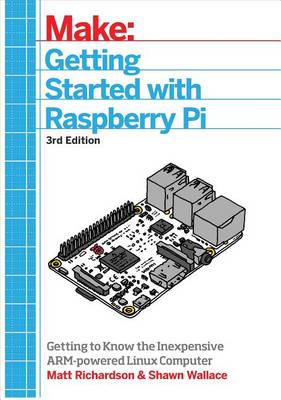Make: Projects
1 total work
Getting Started with Raspberry Pi
by Shawn Wallace and Professor Matt Richardson
Published 1 December 2012
The Raspberry Pi platform was developed to lower the barriers to teaching young people programming, and it is also popular with hardware hackers and hobbyists who may have a project that needs more computing power than a microcontroller. The first section of the book gets you up and running; after the first chapter the reader will have installed the operating system, will have an understanding of all the hardware features of the Pi, and will have set up the small computer with the correct power source and peripherals. This is followed by a quick start user guide, with enough context and examples of commands to get around the computer. The book also provides instructions for getting started with programming in Scratch and Python, and examples of using the general purpose input and output interface. Finally, the reader is guided through two hands on hardware hacking projects.
